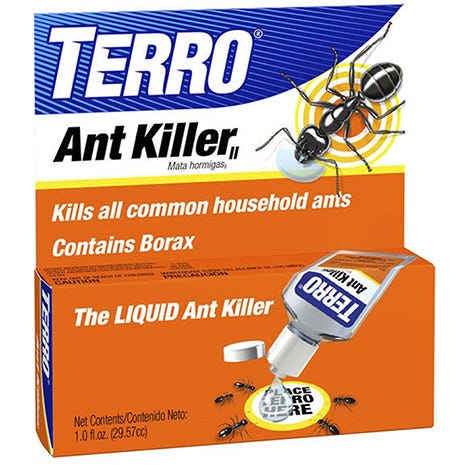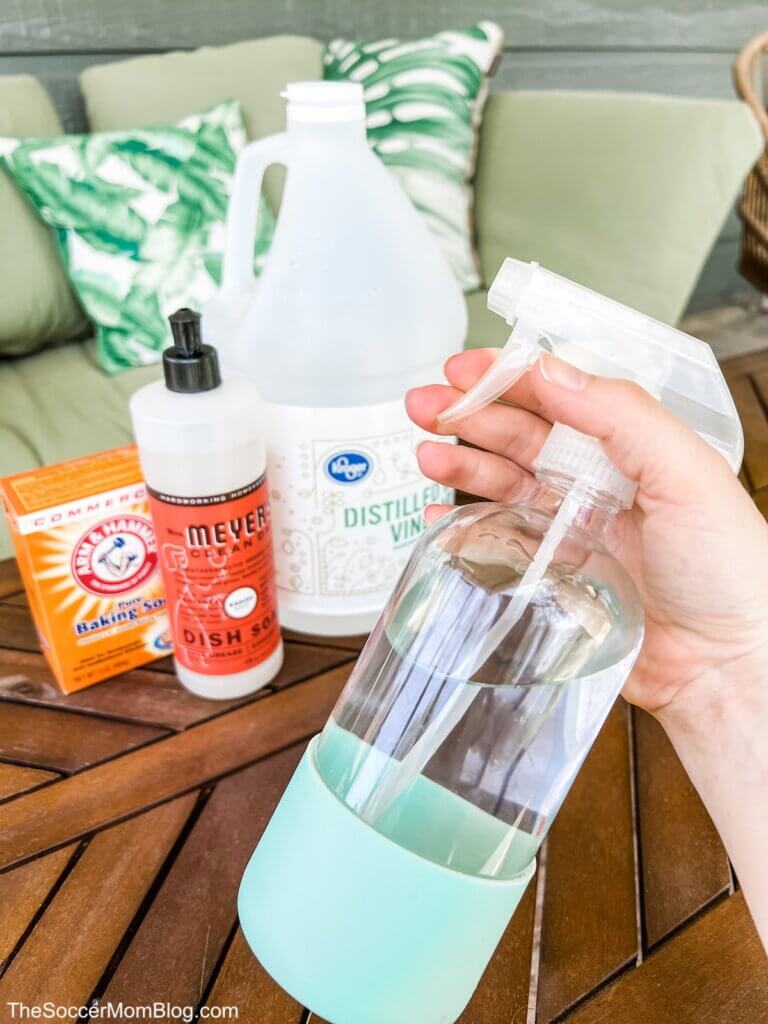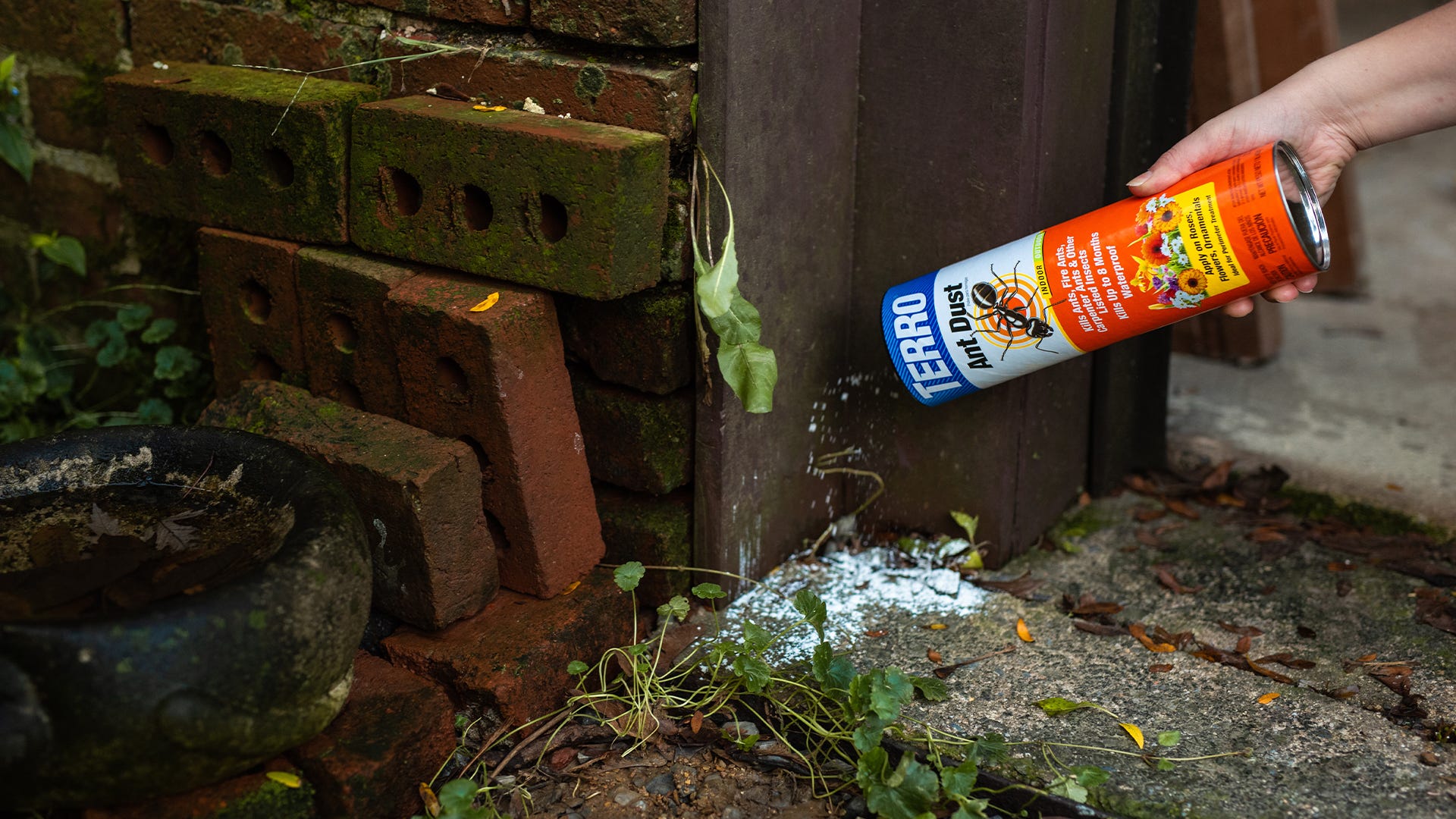To use ant spray, first read the product label for specific instructions, then apply it directly onto ants and their trails. It’s essential to target entry points and nests for effective control.
Ant infestations can pose a significant problem in homes and gardens, leading to property damage and contaminating food. Knowing how to properly apply ant spray is crucial to manage these pests effectively. A carefully chosen ant spray, when used correctly, can eliminate ant colonies and discourage re-entry.
Before reaching for the spray, identifying the type of ants and understanding their behavior will optimize the treatment’s effectiveness. Safe and strategic application ensures that the ant problem is tackled without harm to non-target species or the environment. Choose a high-quality ant spray with proven efficacy to protect your home from these persistent invaders.
Introduction To Ant Control
Welcome to the world of ant control, a vital aspect of household pest management. An army of ants can quickly invade your home, targeting your kitchen, bathroom, or any other areas that provide a food source. Understanding how to navigate the ant invasion and regain control of your home is of utmost importance. Let’s discuss the significance of managing ant infestations and explore the types of ant sprays available.
Why Managing Ant Infestations Is Crucial
Ignoring an ant problem can lead to bigger issues. Ants can contaminate food and damage property. Some species might even cause painful bites. Keeping your home ant-free ensures a healthier and more comfortable living environment for you and your family.
- Prevents food contamination
- Protects your home from structural damage
- Avoids bites and stings
Types Of Ant Sprays Available
Selecting the right ant spray is key to effective pest control. Different sprays work for various circumstances and ant types. Here’s a quick rundown:
| Type of Spray | Use Case | Active Ingredient |
|---|---|---|
| Contact Anticides | For visible ant trails | Pyrethroids |
| Baits | For hidden nests | Borax |
| Non-Repellent Sprays | For indoor and outdoor | Fipronil |
Choose a spray that targets the ant species in your home. Always follow the directions on the label for safe and successful use.

Credit: www.terro.com
Before You Begin
Preparing to rid your home of ants can feel overwhelming. Proper steps ensure a safe and effective process. Learn crucial pre-application tips. Avoid common pitfalls. Equip yourself with knowledge for a successful ant control experience.
Safety Precautions With Chemical Sprays
Ant sprays contain chemicals that can harm people and pets. Your safety matters most. Wear protective gear. Read labels carefully. Ensure good ventilation. Keep ant sprays away from children and animals.
- Read the product label for safety instructions.
- Wear gloves and a mask to avoid contact with the spray.
- Keep the area well-ventilated during and after spraying.
- Store ant spray out of reach from children and pets.
Identifying The Ant Species
Ant species differ. Their behaviors and preferences vary. Identify the species invading your home. Tailor your approach for maximum effectiveness.
| Ant Type | Preferred Bait | Location |
|---|---|---|
| Carpenter Ants | Protein-based | Wooden Structures |
| Sugar Ants | Sweet-based | Kitchen Areas |
| Fire Ants | Grease-based | Outdoor Spaces |
Different baits attract different ants. Observe the trail. Note the bait they prefer. This knowledge leads to the right ant spray choice and application method.
Choosing The Right Ant Spray
Fighting ants in your home or garden is no small task. Choosing the right ant spray can make all the difference. With a variety of options on the market, selecting the perfect one can be overwhelming. Let’s dive into key points to help simplify your decision.
Considerations For Indoor Use
Indoor ant sprays require careful selection. Safety tops the list of concerns. Choose products labeled as safe for indoor use, ensuring they won’t harm your family or pets. Look for sprays with a narrower reach to avoid widespread chemical application.
| Feature | Benefit |
|---|---|
| Non-toxic | Safe around children and pets |
| Odorless | No strong chemical smell |
| Residue-free | No visible signs after application |
- Check labels for active ingredients.
- Seek fast-acting solutions for immediate results.
- Aim for longevity to prevent reinfestation.
Outdoor Ant Control Options
Outdoor sprays often need to cover larger areas and last longer against the elements. Durable and weather-resistant formulas are essential. Select sprays with specialized nozzles for targeted application and to protect beneficial insects.
- Search for UV-resistant options to ensure longevity.
- Opt for sprays that won’t wash away easily.
- Be mindful of your garden’s ecosystem.
Read reviews and seek recommendations for robust outdoor sprays. These should combat ant colonies effectively while safeguarding your outdoor oasis.
Preparation For Application
Before waging war on ants, proper preparation sets the stage for success. Preparation for application is crucial to ensure ant spray does the job effectively. Let’s get started on ensuring a safe and effective application.
Cleaning And Removing Food Sources
Ants invade homes searching for food. Remove their motivation and they’re less likely to stay. Follow these steps:
- Wipe down surfaces to remove crumbs and spills.
- Sweep and vacuum floors to pick up any food debris.
- Store food in airtight containers to block ant access.
- Empty trash bins regularly, using bags with secure seals.
Protecting Household Items
Ant spray can harm certain items. Take care to shield belongings from spray:
| Item | Action Needed |
|---|---|
| Dishes and Utensils | Cover or store away |
| Pets’ Bowls | Remove or cover |
| Children’s Toys | Clean and put away |
| Electronics | Unplug and cover |
Remember to also cover or remove any aquariums or terrariums.
Move items at least three feet away from treatment areas.
Applying The Ant Spray
Ants can turn picnics into nightmares and kitchens into horror scenes. Applying ant spray puts you back in control. Learning to use it properly is crucial. Let’s master the technique together.
Step-by-step Application Process
- Read the label: Always start by reading the product instructions.
- Wear protective gear: Put on gloves and a mask to stay safe.
- Test the spray: Try it in a small area to check for staining.
- Clear the area: Remove food and pets from the spray zone.
- Spray from a distance: Hold the can 8-12 inches from the target.
- Apply evenly: Cover all surfaces where ants walk.
- Let it dry: Wait for the spray to dry before returning to the area.
- Reapply if needed: Follow the label for timing on reapplication.
Targeting Ant Trails And Nests
Ants follow invisible trails. Spotting these paths is imperative. They lead back to the nest, which is the source of your ant problem. Here’s how to target them:
- Watch the ants: Observe their movements to find their paths.
- Trace back to the nest: Follow their trail to discover their home.
- Apply the spray directly: Use the nozzle to target these areas precisely.
- Wait and watch: Give the spray time to work its magic on the colony.
- Block entry points: Seal cracks and crevices to prevent new invaders.

Credit: thesoccermomblog.com
Aftercare And Maintenance
Using ant spray effectively means more than just dealing with the current problem. Proper aftercare and maintenance are key to ensuring the ants do not return.
Post-spray Cleanup
After ant spray application, cleaning the area is crucial. This eliminates any chemical residue that can be harmful to pets or children.
- Start by ventilating the area. Open windows and doors to allow fresh air to circulate.
- Wear gloves to protect your hands from chemicals.
- Wipe down treated surfaces with soapy water to remove the ant spray.
- Dry the surfaces with clean towels to avoid any wet spots where ants could regather.
Regular Monitoring For Reinfestation
Stay vigilant to catch signs of new ant activity as early as possible. Implement these steps:
- Conduct weekly inspections of potential entry points, such as windows and doors.
- Check areas where food is present, like kitchen counters or pantries.
- Use ant baits to monitor activity, placing them along the ant trails.
- Keep a log of sightings and take action if there’s consistent activity.
Regular cleaning and decluttering will also discourage ants from making a comeback.
| Area | Action | Frequency |
|---|---|---|
| Kitchen counters | Clean spills immediately | Daily |
| Trash cans | Seal and clean regularly | Weekly |
By following these ant spray aftercare and maintenance steps, your home will stay ant-free for longer periods.
Natural And Non-toxic Alternatives
Many people prefer safer, greener options for ant control. These methods protect your home from ants without harmful chemicals. Natural and non-toxic alternatives cover a range of options. Not only do they safeguard your health, but they are also eco-friendly. Let’s explore ways to fend off ants with natural substances!
Using Essential Oils
Essential oils are a potent natural deterrent for ants. Their strong scent disrupts ant trails and confuses them. Here are top oils that repel ants:
- Peppermint Oil – Leaves a refreshing scent
- Tea Tree Oil – Known for its antiseptic properties
- Lemon Eucalyptus – Has a crisp, clean fragrance
To use, mix a few drops with water in a spray bottle. Spray around windows, doors, and any ant entrances. Remember to shake well before each use.
Diy Ant Repellent Recipes
Creating your own ant repellent is easy and cost-effective. Here are simple recipes:
| Ingredients | Instructions |
|---|---|
| Vinegar & Water | Mix equal parts and spray on trails and entry points. |
| Borax, Sugar & Water | Combine and place on a dish where ants frequent. |
| Cinnamon & Clove Oil | Apply directly or mix with water to spray affected areas. |
Choose a recipe, gather ingredients, and mix as guided. These blends are effective, safe for your home, and keep ants at bay.

Credit: www.amazon.com
Dealing With Persistent Ant Problems
Persistent ant infestations can be frustrating. Despite using ant spray, these tiny invaders often find new ways to enter and colonize. For a home truly free of ants, specific strategies become vital. Here’s what to do when ants continuously march into your space.
When To Call A Professional
Some ant problems can be too tough to handle alone. Recognize these signs:
- Large colonies that seem limitless
- Multiple nests even after treatment
- Damage to wood or structures
Ant experts possess the tools and knowledge to tackle infestations effectively. Professional intervention ensures a thorough resolution.
Long-term Solution Strategies
For ongoing control, adopt these strategies:
- Seal entry points: Inspect and block any cracks or gaps.
- Remove attractants: Keep food and waste sealed.
- Use bait stations: Place them to target the colony source.
Maintain regular cleaning and monitor for new signs of activity. Consistent efforts prevent future invasions.
Frequently Asked Questions Of How To Use Ant Spray
What Is The Best Time To Apply Ant Spray?
Ants are typically most active during the warmer months. The best time to apply ant spray is when you first notice ant activity. This can help prevent a larger infestation. Early morning or late afternoon, when ants are foraging for food, is ideal.
How Do You Safely Use Ant Spray Indoors?
When using ant spray indoors, ensure the area is well-ventilated. Keep children and pets away until the spray has dried completely. Apply directly to ant trails and entry points. Avoid spraying on surfaces used for food preparation.
Can Ant Spray Be Used Around Pets And Children?
Select ant sprays labeled as pet and child-safe, and follow the instructions carefully. Even with these products, pets and children should not be present during application and should not enter the treated area until it’s dry.
How Often Should I Reapply Ant Spray For Effectiveness?
Reapply ant spray according to the manufacturer’s instructions, typically once ant activity is observed again. This can vary from a few weeks to several months, depending on the product and the severity of the ant problem.
Conclusion
Navigating the world of ant infestations requires effective solutions. Ant spray is a potent ally in this battle. By choosing the right product and applying it correctly, you can safeguard your space from pesky intruders. Remember, persistence and safety are key to maintaining a bug-free environment.
Fight the ant invasion with confidence and the right spray in hand.

I’m MD Tanvir, and I bring years of expertise gained from working closely with pest control companies to the forefront. My journey in the industry has inspired me to launch Bug Battler, a platform aimed at equipping people with the know-how to combat pests autonomously. Through Bug Battler, I aim to empower individuals with practical insights to tackle pest infestations effectively.

